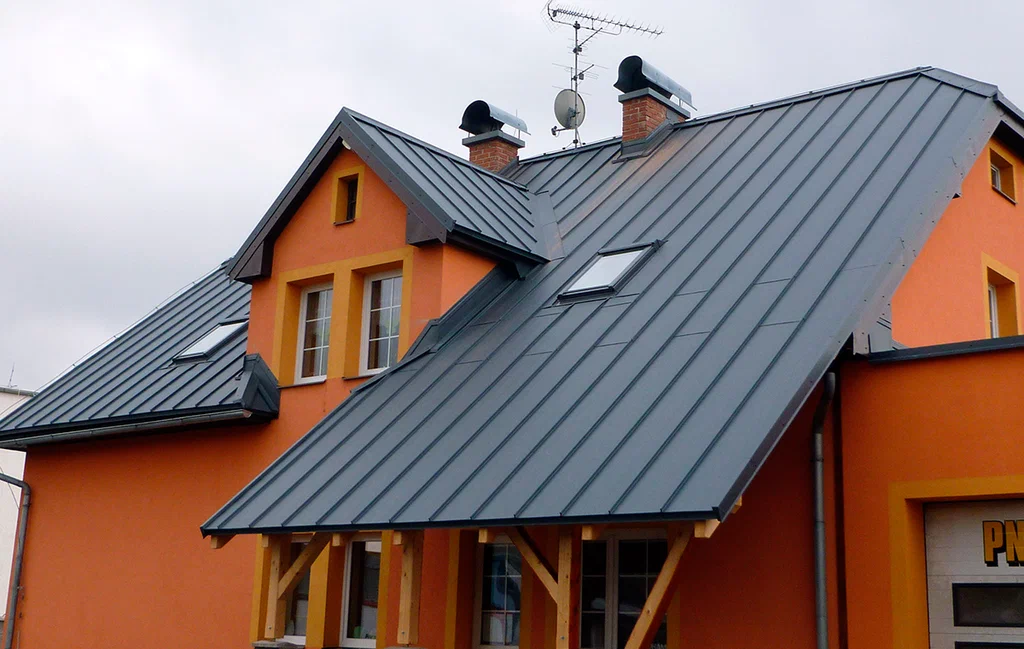When it comes to protecting your home or commercial building, the roof plays a critical role in ensuring safety, durability, and energy efficiency. Among the many roofing materials available today, metal roofing stands out as one of the most reliable and long-lasting options. Known for its sleek appearance, incredible strength, and minimal maintenance, metal roofing has become a popular choice for property owners looking to invest in a long-term solution. This blog will explore everything you need to know about metal roofing installation—from its benefits and materials to the installation process and maintenance tips.
What Is Metal Roofing?
Metal roofing refers to a roofing system made from metal pieces or tiles characterized by their high resistance, impermeability, and longevity. Common metals used for roofing include steel, aluminum, copper, zinc, and tin. These materials are often coated with protective layers to prevent rust, corrosion, and UV damage. Metal roofs are used in both residential and commercial structures, offering a combination of strength and style that suits various architectural designs.
Benefits of Metal Roofing
- Exceptional Durability
Metal roofs can last anywhere from 40 to 70 years, depending on the material. Unlike traditional asphalt shingles that deteriorate over time, metal roofing withstands harsh weather conditions, including heavy rains, snow, and strong winds. It’s also fire-resistant, providing an additional layer of safety. - Energy Efficiency
Metal roofing reflects solar radiant heat, reducing cooling costs by up to 25%. This makes it an environmentally friendly choice that helps regulate indoor temperatures efficiently. - Low Maintenance
Once installed properly, metal roofs require minimal maintenance. Routine inspections and occasional cleaning are usually enough to keep them in excellent condition. - Lightweight and Easy to Install
Compared to concrete or tile roofing, metal panels are significantly lighter, reducing the stress on your building’s structure. This feature also simplifies the installation process. - Sustainability
Metal roofing materials are often made from recycled metals and can be fully recycled at the end of their life cycle. This makes metal roofing an eco-friendly option for homeowners who prioritize sustainability. - Aesthetic Appeal
Available in various colors, textures, and finishes, metal roofs can enhance the overall appearance of your property. Whether you prefer a modern, industrial look or a classic design, there’s a metal roof style to suit your taste.
Types of Metal Roofing Materials
- Steel Roofing
Steel is the most commonly used metal for roofing due to its affordability and strength. It comes in three types—galvanized, galvalume, and weathering steel—each offering unique protection against rust and corrosion. - Aluminum Roofing
Aluminum is lightweight, resistant to corrosion, and perfect for coastal areas where salt exposure is high. It provides a sleek and modern look for homes and commercial buildings. - Copper Roofing
Known for its stunning appearance and longevity, copper roofing develops a natural green patina over time. Though expensive, it can last for over 100 years. - Zinc Roofing
Zinc roofs are self-healing, meaning small scratches can fix themselves over time through oxidation. They’re durable, eco-friendly, and have a unique aesthetic appeal. - Tin Roofing
While less common today, tin roofing was once a popular choice. Modern “tin roofs” usually refer to steel coated with tin for added protection and shine.
The Metal Roofing Installation Process
Installing a metal roof requires precision and experience. Below is a step-by-step overview of the typical installation process:
- Inspection and Preparation
The first step involves inspecting the existing roof structure. Contractors check for any damage or weaknesses that might affect the new installation. If necessary, repairs or reinforcements are made before proceeding. - Measuring and Material Selection
Accurate measurements are taken to determine how much material is needed. This step ensures minimal waste and precise fitting during installation. - Underlayment Installation
A waterproof underlayment is installed over the roof deck to provide an extra layer of protection against moisture. This barrier helps prevent leaks and enhances insulation. - Panel or Shingle Placement
Metal panels or shingles are installed starting from the bottom edge of the roof, working upward. Each piece is securely fastened using specialized screws or clips designed for metal roofing systems. - Flashing and Trim Installation
Flashing is applied around chimneys, vents, and other roof openings to prevent water infiltration. Trim pieces are added along the edges for a polished, professional finish. - Final Inspection
After installation, a thorough inspection ensures all panels are secure, seams are tight, and there are no exposed fasteners. Proper installation guarantees optimal performance and longevity.
Common Mistakes to Avoid
- Incorrect Fastening
Using the wrong type or size of screws can cause leaks or damage over time. Always use manufacturer-recommended fasteners. - Poor Ventilation
Improper ventilation can lead to condensation buildup under the roof, causing moisture-related issues like mold or rust. - Skipping Underlayment
Some installers skip underlayment to cut costs, but this is a crucial layer that protects against leaks and improves insulation. - Inaccurate Measurements
Even small measurement errors can result in poor alignment or wasted material. Always double-check before cutting or installing panels.
Maintenance Tips for Metal Roofs
To keep your metal roof in excellent shape for decades, follow these maintenance tips:
- Inspect Regularly: Schedule inspections twice a year, especially after extreme weather conditions.
- Clean the Surface: Remove dirt, debris, and leaves to prevent scratches or water retention.
- Check for Rust: Although metal roofs are corrosion-resistant, check for any early signs of rust and treat them promptly.
- Tighten Loose Fasteners: Over time, fasteners may loosen due to expansion and contraction. Tighten them when necessary.
- Trim Overhanging Branches: Prevent tree branches from scratching or denting the metal panels.
Cost and Return on Investment
The cost of metal roofing installation varies depending on the material, roof size, and design complexity. On average, homeowners can expect to pay between $8,000 and $20,000 for a complete installation. While the upfront cost may be higher than traditional roofing, the long-term savings in maintenance, energy efficiency, and durability make it a worthwhile investment. Additionally, metal roofs can increase property value and appeal to potential buyers.
Why Hire a Professional Installer
Although DIY metal roofing kits are available, professional installation is strongly recommended. Experts have the tools, skills, and experience to ensure proper installation that meets safety standards and manufacturer warranties. A professional installer can also help you choose the right materials, finishes, and designs for your specific needs.
Conclusion
A metal roofing installation is one of the smartest decisions you can make for your home or business. It provides unmatched durability, energy efficiency, and modern aesthetics, ensuring your property stays protected and visually appealing for decades. Whether you’re replacing an old roof or building a new structure, investing in a high-quality metal roof will deliver long-term value, peace of mind, and style.
If you’re considering upgrading to a metal roof, consult a trusted roofing contractor to guide you through material selection, design, and installation. With expert workmanship and proper maintenance, your metal roof will stand strong against time and nature—offering protection, performance, and beauty for years to come.

